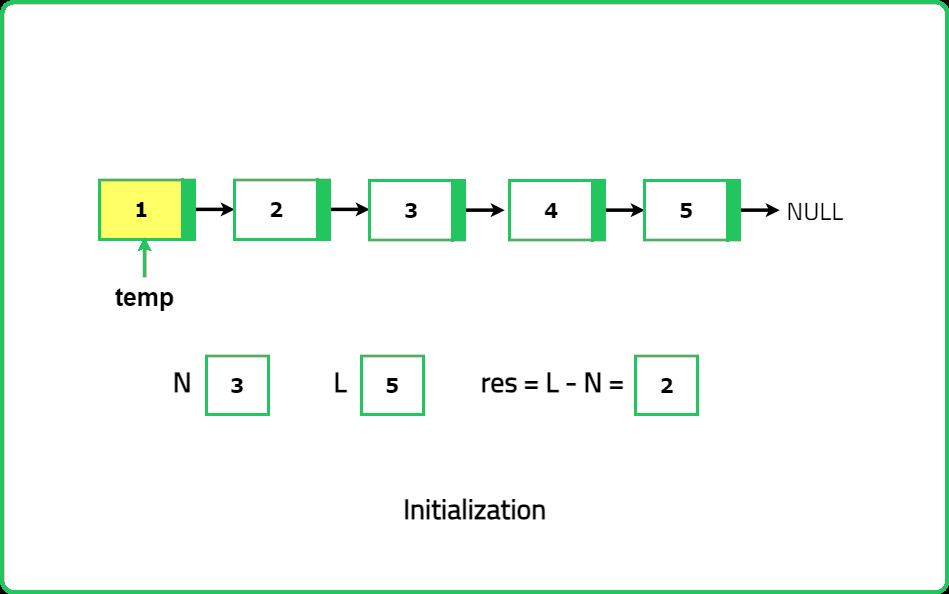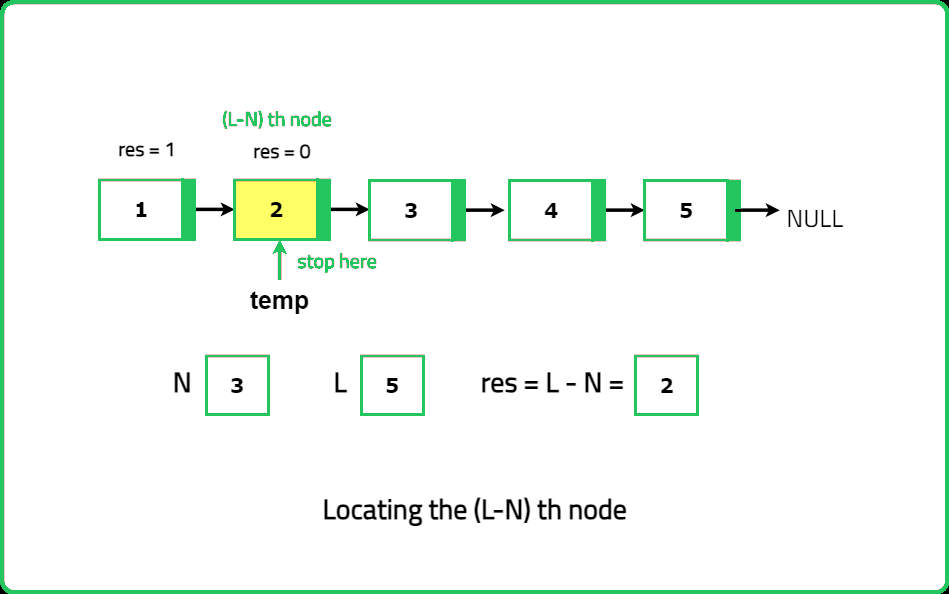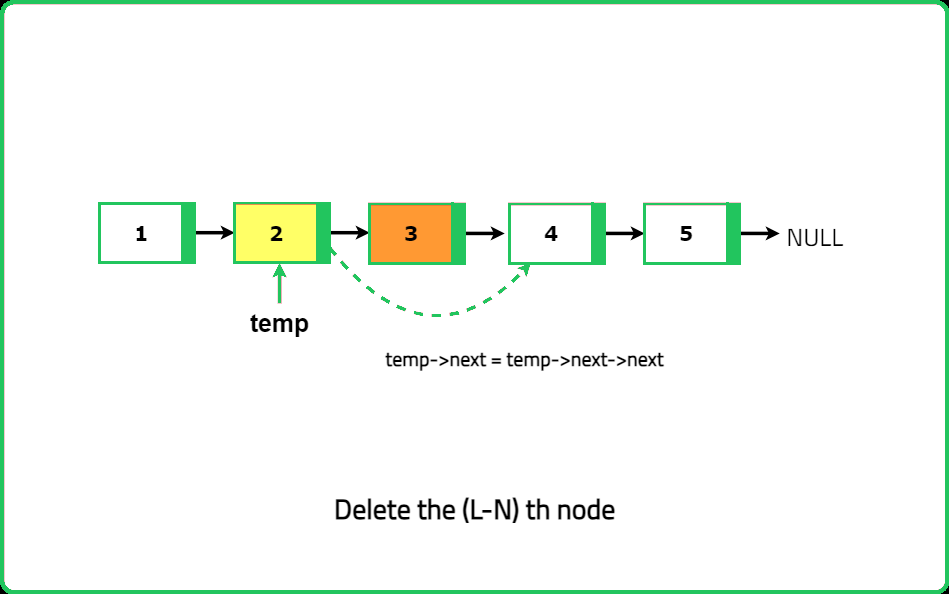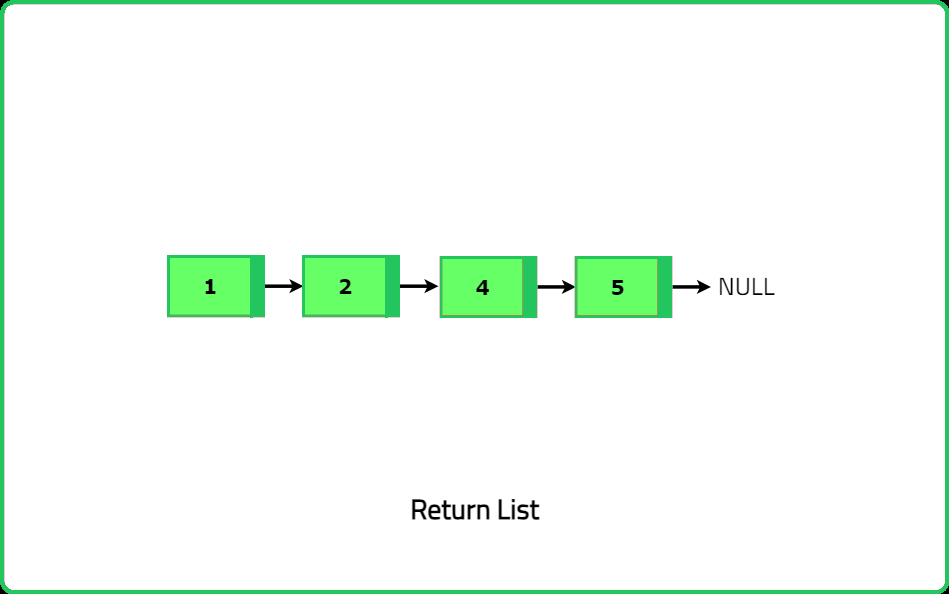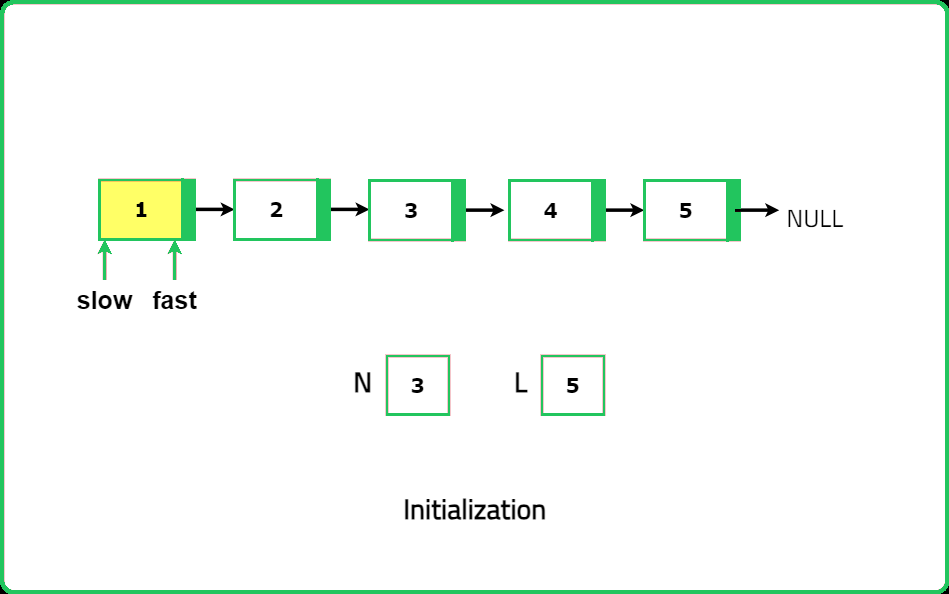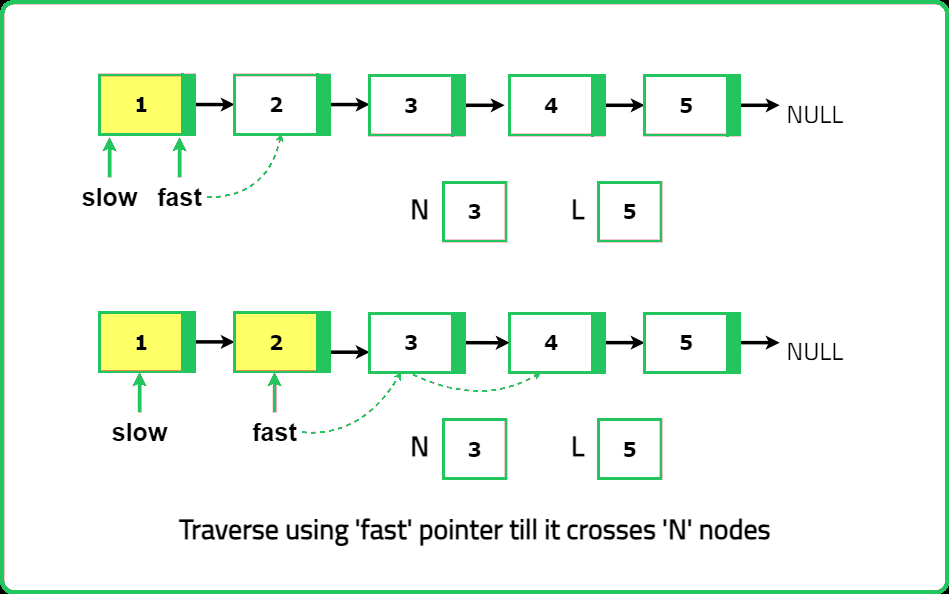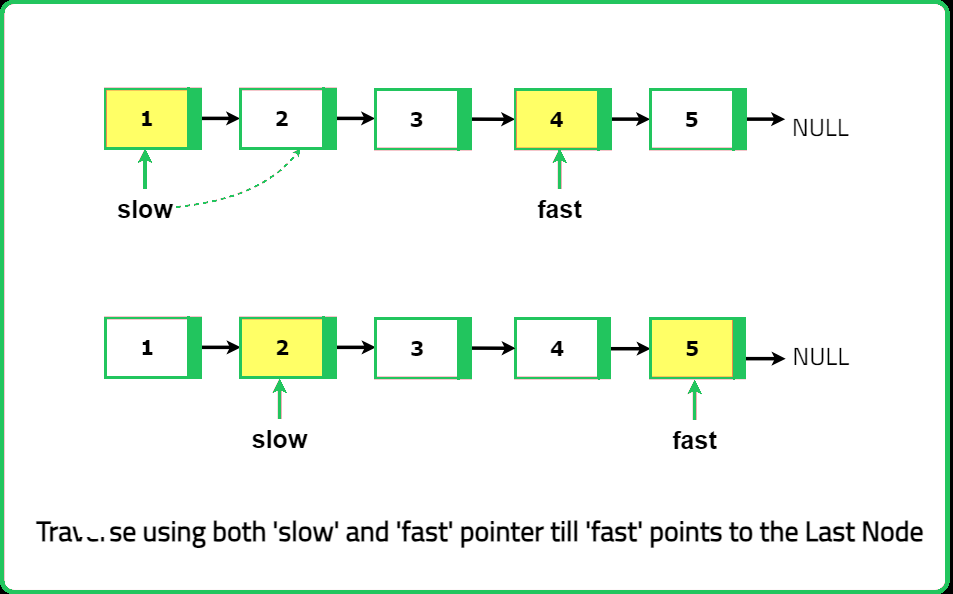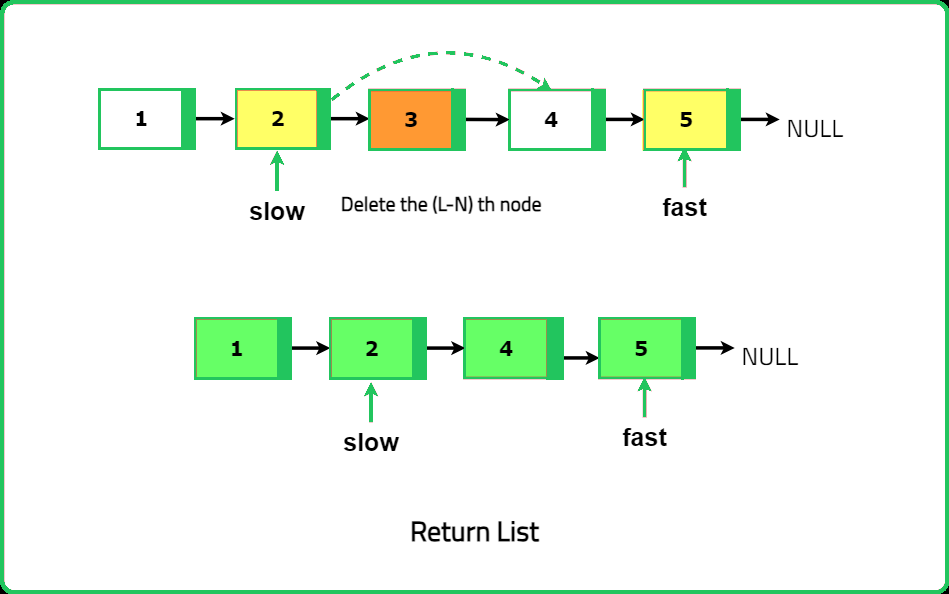Remove Nth node from the back of the LL
Linked-List
Logic Building
Medium
Given the head of a singly linked list and an integer n. Remove the nth node from the back of the linked List and return the head of the modified list. The value of n will always be less than or equal to the number of nodes in the linked list.
Examples:
Input: head -> 1 -> 2 -> 3 -> 4 -> 5, n = 2
Output: head -> 1 -> 2 -> 3 -> 5
Explanation: The 2nd node from the back was the node with value 4.
Input: head -> 5 -> 4 -> 3 -> 2 -> 1, n = 5
Output: head -> 4 -> 3 -> 2 -> 1
Explanation: The 5th node from the back is the first node.
Input: head -> 9 -> 8 -> 7, n = 1
Constraints
- 1 <= number of nodes in the Linked List <= 105
- 0 <= ListNode.val <= 104
- 1 <= n <= number of nodes in the Linked List.
Hints
- A brute-force approach involves: Finding the length of the linked list (O(n)). Removing the (length - n + 1)th node from the start (O(n)).
- Use two pointers: fast and slow. Move fast n steps ahead. Move slow and fast together until fast reaches the end. slow will now be just before the node to remove. Adjust pointers to delete the nth node from the end.
Company Tags
Zynga
Byju's
Electronic Arts
Instacart
Rockstar Games
Walmart
IBM
Oracle
Docker
Ubisoft
PayPal
Airbnb
Activision Blizzard
Siemens Healthineers
Micron Technology
Qualcomm
Dropbox
KPMG
Morgan Stanley
Bloomberg
HCL Technologies
Teladoc Health
Stripe
Epic Systems
Reddit
Google
Microsoft
Amazon
Meta
Apple
Netflix
Adobe
